LnRiLWZpZWxke21hcmdpbi1ib3R0b206MC43NmVtfS50Yi1maWVsZC0tbGVmdHt0ZXh0LWFsaWduOmxlZnR9LnRiLWZpZWxkLS1jZW50ZXJ7dGV4dC1hbGlnbjpjZW50ZXJ9LnRiLWZpZWxkLS1yaWdodHt0ZXh0LWFsaWduOnJpZ2h0fS50Yi1maWVsZF9fc2t5cGVfcHJldmlld3twYWRkaW5nOjEwcHggMjBweDtib3JkZXItcmFkaXVzOjNweDtjb2xvcjojZmZmO2JhY2tncm91bmQ6IzAwYWZlZTtkaXNwbGF5OmlubGluZS1ibG9ja311bC5nbGlkZV9fc2xpZGVze21hcmdpbjowfQ==
IEBtZWRpYSBvbmx5IHNjcmVlbiBhbmQgKG1heC13aWR0aDogNzgxcHgpIHsgICB9IEBtZWRpYSBvbmx5IHNjcmVlbiBhbmQgKG1heC13aWR0aDogNTk5cHgpIHsgICB9IA==
Artificial Chemistry is a subfield of Artificial Life that seeks to explore the “emergence, evolution, and behavior of life” via simulations of molecular processes . In this field, researchers study systems made up of virtual molecules that interact according to a defined set of rules in the hopes that they will assemble themselves into more complex structures.
One of the foundational ideas of Artificial Chemistry (and Artificial Life in general) is the idea of emergence. It is used “to deduce global properties of a system from the local interactions between its subsystems … in other words, a system has certain properties not due to the properties of its constituents, but due to their organization and their mutual function in the whole.”. These interactions may follow simple rules, but, given appropriate conditions and sufficient time, more complex behavior may emerge.
While other fields within Artificial Life analyze natural molecular processes to study these behaviors, Artificial Chemistry attempts to abstract away from them. Instead, artificial chemical systems (that resemble real chemical systems) are studied via computer simulation. The hope is that if we can understand how complex structures emerge and organize themselves within these abstract models, we can also gain insight into the basic mechanisms and conditions necessary for life.
Key Concepts
Formally, an artificial chemistry is a man-made system that resembles a real chemical system. More specifically, an artificial chemistry can be described by 3 key components: a set of possible molecules, reaction rules, and an algorithm deciding how the rules are applied to the molecules . Each of these components is described in detail below. All of the descriptions and explanations are from “A Brief Guide to the Ideas and Artefacts of Computational Artificial Life” by Dittrich, et al .
First, we have the set of possible molecules S, where S = {s1, s2 …, sn) and n may be infinite. These molecules can take many forms and types; they can be numbers, symbols, sequences of characters, binary strings, or even other types of data structures. Whichever one of these representations the molecules take is referred to as the “structure” of the artificial chemistry, and it is often the first step in defining one of these systems.
Next, we have the set of rules R, where each rule r ∈ R can be defined as follows:
s1 + s2 + … sn → s’1 + s’2 + … + s’m
where each si ∈ S.
Each of these rules states that the n molecules on the left-hand side of the rule can react and be replaced by the m molecules on the right. For a rule to be applied, all of the molecules on the left-hand side must be available. It’s possible and often the case that there are other conditions that must be met for a reaction to take place (rate constants, probability of reaction, etc.), but this is dependent on what is being studied within a particular system.
Finally, we have the algorithm deciding how the rules R are applied to the molecules S, denoted A. This algorithm determines how the set of rules is applied to some collection of molecules P that is a subset of S. These collections can also be known as reactors, reaction vessels, or populations. There are a variety of different approaches that can be used to model the dynamics of one of these collections. For example, one approach involves using a computer to draw a random sample from the population, checking whether any rule r ∈ R applies, and then performing the rule if so. Other approaches involve using differential equations to represent the concentrations of the different types of molecules.
Current research
The bulk of modern research in Artificial Chemistry can be categorized into one of the following three areas: modeling, information processing, and optimization . The first type, modeling research, can be applied in many different domains. They can be used to model biological and evolutionary systems (as described in the introduction), but are also used to model systems within the field of sociology or models of parallel processing . The next type, information processing, involves using properties of chemical systems to perform computations. Within this area, there are two types of research: research involving real molecules to perform these computations and research where the chemistry component is merely a metaphor that inspires the design of hardware and software. Finally, there is the area of optimization, where artificial chemical systems are used to find solutions to combinatorial problems. This field is one that is most similar to the field of evolutionary computing, as artificial chemical systems are also used there.
Citations
{4204406:S4M38P43};{4204406:JCX9Z65P};{4204406:S4M38P43};{4204406:JCX9Z65P};{4204406:JCX9Z65P};{4204406:JCX9Z65P} apa default asc no 3458 %7B%22status%22%3A%22success%22%2C%22updateneeded%22%3Afalse%2C%22instance%22%3A%22zotpress-9f9bba2012ef848bd9b1f40c1fa4d0ee%22%2C%22meta%22%3A%7B%22request_last%22%3A0%2C%22request_next%22%3A0%2C%22used_cache%22%3Atrue%7D%2C%22data%22%3A%5B%7B%22key%22%3A%22S4M38P43%22%2C%22library%22%3A%7B%22id%22%3A4204406%7D%2C%22meta%22%3A%7B%22lastModifiedByUser%22%3A%7B%22id%22%3A7309051%2C%22username%22%3A%22imytk%22%2C%22name%22%3A%22%22%2C%22links%22%3A%7B%22alternate%22%3A%7B%22href%22%3A%22https%3A%5C%2F%5C%2Fwww.zotero.org%5C%2Fimytk%22%2C%22type%22%3A%22text%5C%2Fhtml%22%7D%7D%7D%2C%22creatorSummary%22%3A%22Dorin%22%2C%22parsedDate%22%3A%222014%22%2C%22numChildren%22%3A0%7D%2C%22bib%22%3A%22%3Cdiv%20class%3D%5C%22csl-bib-body%5C%22%20style%3D%5C%22line-height%3A%202%3B%20padding-left%3A%201em%3B%20text-indent%3A-1em%3B%5C%22%3E%5Cn%20%20%3Cdiv%20class%3D%5C%22csl-entry%5C%22%3EDorin%2C%20A.%20%282014%29.%20%3Ci%3EBiological%20Bits%3A%20A%20brief%20guide%20to%20the%20ideas%20and%20artefacts%20of%20computational%20artificial%20life%3C%5C%2Fi%3E.%20Animaland.%20%3Ca%20href%3D%27https%3A%5C%2F%5C%2Fusers.monash.edu%5C%2F~aland%5C%2FBiologicalBits.html%27%3Ehttps%3A%5C%2F%5C%2Fusers.monash.edu%5C%2F~aland%5C%2FBiologicalBits.html%3C%5C%2Fa%3E%3C%5C%2Fdiv%3E%5Cn%3C%5C%2Fdiv%3E%22%2C%22data%22%3A%7B%22itemType%22%3A%22book%22%2C%22title%22%3A%22Biological%20Bits%3A%20A%20brief%20guide%20to%20the%20ideas%20and%20artefacts%20of%20computational%20artificial%20life%22%2C%22creators%22%3A%5B%7B%22creatorType%22%3A%22author%22%2C%22firstName%22%3A%22Alan%22%2C%22lastName%22%3A%22Dorin%22%7D%5D%2C%22abstractNote%22%3A%22This%20guide%20provides%20broad%20coverage%20of%20computational%20Artificial%20Life%2C%20a%20field%20encompassing%20the%20theories%20and%20discoveries%20underpinning%20the%20invention%20and%20study%20of%20technology-based%20living%20systems.%20It%20is%20targetted%20at%20students%20of%20all%20ages%20who%20are%20new%20to%20Artificial%20Life%20or%20are%20hoping%20to%20gain%20a%20broad%20understanding%20of%20its%20themes.%5Cn%5CnThe%20book%20focusses%20specifically%20on%20Artificial%20Life%20realised%20in%20computer%20software.%20Topics%20include%3A%5Cn%5Cnpre-history%20of%20Artificial%20Life%5Cnartificial%20chemistry%5Cnartificial%20cells%5Cnorganism%20development%5Cnlocomotion%5Cngroup%20behaviour%5Cnevolution%5Cnecosystem%20simulation%22%2C%22date%22%3A%222014%22%2C%22language%22%3A%22%22%2C%22ISBN%22%3A%220-646-91871-0%22%2C%22url%22%3A%22https%3A%5C%2F%5C%2Fusers.monash.edu%5C%2F~aland%5C%2FBiologicalBits.html%22%2C%22collections%22%3A%5B%5D%2C%22dateModified%22%3A%222023-07-28T06%3A00%3A10Z%22%7D%7D%2C%7B%22key%22%3A%22JCX9Z65P%22%2C%22library%22%3A%7B%22id%22%3A4204406%7D%2C%22meta%22%3A%7B%22lastModifiedByUser%22%3A%7B%22id%22%3A7309051%2C%22username%22%3A%22imytk%22%2C%22name%22%3A%22%22%2C%22links%22%3A%7B%22alternate%22%3A%7B%22href%22%3A%22https%3A%5C%2F%5C%2Fwww.zotero.org%5C%2Fimytk%22%2C%22type%22%3A%22text%5C%2Fhtml%22%7D%7D%7D%2C%22creatorSummary%22%3A%22Dittrich%20et%20al.%22%2C%22parsedDate%22%3A%222001%22%2C%22numChildren%22%3A0%7D%2C%22bib%22%3A%22%3Cdiv%20class%3D%5C%22csl-bib-body%5C%22%20style%3D%5C%22line-height%3A%202%3B%20padding-left%3A%201em%3B%20text-indent%3A-1em%3B%5C%22%3E%5Cn%20%20%3Cdiv%20class%3D%5C%22csl-entry%5C%22%3EDittrich%2C%20P.%2C%20Ziegler%2C%20J.%2C%20%26amp%3B%20Banzhaf%2C%20W.%20%282001%29.%20Artificial%20Chemistries%26%23×2014%3BA%20Review.%20%3Ci%3EArtificial%20Life%3C%5C%2Fi%3E%2C%20%3Ci%3E7%3C%5C%2Fi%3E%283%29%2C%20225%26%23×2013%3B275.%20%3Ca%20href%3D%27https%3A%5C%2F%5C%2Fdoi.org%5C%2F10.1162%5C%2F106454601753238636%27%3Ehttps%3A%5C%2F%5C%2Fdoi.org%5C%2F10.1162%5C%2F106454601753238636%3C%5C%2Fa%3E%3C%5C%2Fdiv%3E%5Cn%3C%5C%2Fdiv%3E%22%2C%22data%22%3A%7B%22itemType%22%3A%22journalArticle%22%2C%22title%22%3A%22Artificial%20Chemistries%5Cu2014A%20Review%22%2C%22creators%22%3A%5B%7B%22creatorType%22%3A%22author%22%2C%22firstName%22%3A%22Peter%22%2C%22lastName%22%3A%22Dittrich%22%7D%2C%7B%22creatorType%22%3A%22author%22%2C%22firstName%22%3A%22Jens%22%2C%22lastName%22%3A%22Ziegler%22%7D%2C%7B%22creatorType%22%3A%22author%22%2C%22firstName%22%3A%22Wolfgang%22%2C%22lastName%22%3A%22Banzhaf%22%7D%5D%2C%22abstractNote%22%3A%22This%20article%20reviews%20the%20growing%20body%20of%20scientific%20work%20in%20artificial%20chemistry.%20First%2C%20common%20motivations%20and%20fundamental%20concepts%20are%20introduced.%20Second%2C%20current%20research%20activities%20are%20discussed%20along%20three%20application%20dimensions%3A%20modeling%2C%20information%20processing%2C%20and%20optimization.%20Finally%2C%20common%20phenomena%20among%20the%20different%20systems%20are%20summarized.%20It%20is%20argued%20here%20that%20artificial%20chemistries%20are%20%5Cu201cthe%20right%20stuff%5Cu201d%20for%20the%20study%20of%20prebiotic%20and%20biochemical%20evolution%2C%20and%20they%20provide%20a%20productive%20framework%20for%20questions%20regarding%20the%20origin%20and%20evolution%20of%20organizations%20in%20general.%20Furthermore%2C%20artificial%20chemistries%20have%20a%20broad%20application%20range%20of%20practical%20problems%2C%20as%20shown%20in%20this%20review.%22%2C%22date%22%3A%2207%5C%2F2001%22%2C%22language%22%3A%22en%22%2C%22DOI%22%3A%2210.1162%5C%2F106454601753238636%22%2C%22ISSN%22%3A%221064-5462%2C%201530-9185%22%2C%22url%22%3A%22https%3A%5C%2F%5C%2Fdirect.mit.edu%5C%2Fartl%5C%2Farticle%5C%2F7%5C%2F3%5C%2F225-275%5C%2F2373%22%2C%22collections%22%3A%5B%5D%2C%22dateModified%22%3A%222023-07-28T06%3A00%3A10Z%22%7D%7D%5D%7DDorin, A. (2014).
Biological Bits: A brief guide to the ideas and artefacts of computational artificial life. Animaland.
https://users.monash.edu/~aland/BiologicalBits.htmlDittrich, P., Ziegler, J., & Banzhaf, W. (2001). Artificial Chemistries—A Review.
Artificial Life,
7(3), 225–275.
https://doi.org/10.1162/106454601753238636 